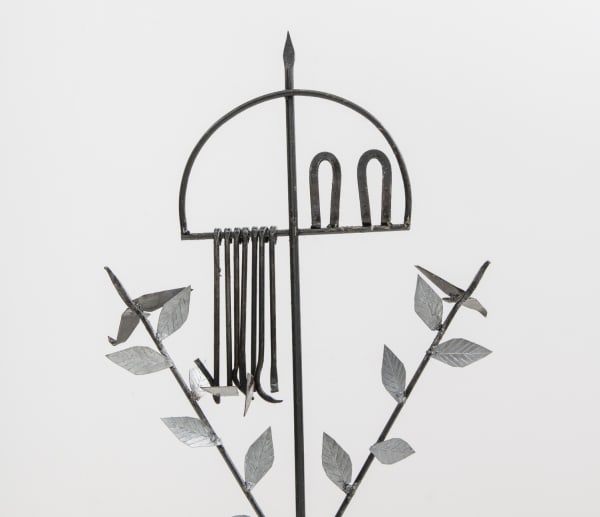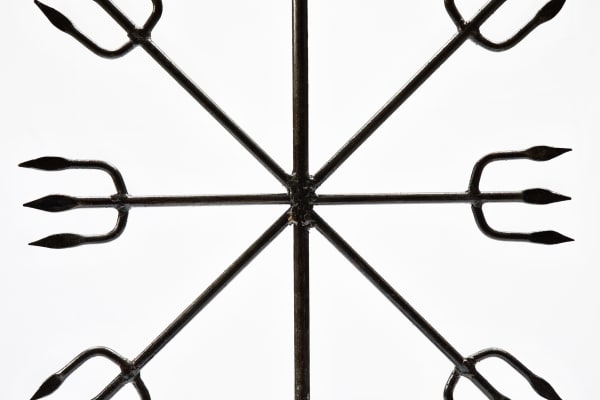José Adário dos Santos b. 1947
José Adário dos Santos (1947) was born in the neighborhood of Caixa d'Água, Salvador, Bahia. At the age of 11, he began his work as a blacksmith of Afro-Brazilian religious artifacts [ferreiro de santo], learning from his master and mentor Maximiano Prates. Since then, he has manufactured gates and ritual implements: percussion instruments such as “agogôs” and iron sculptures that operate a kind of mediation between men and the gods of the religion known in Brazil as “Candomblé”.
For the originality and consistency of his objects, José Adário has become not only the most celebrated blacksmith-sculptor in the Candomblé ceremonies of Bahia but an artist recognized for honoring the Afro-diasporic roots that make up the culture of his region. Based on Candomblé traditions, the canons of Yoruba art, and the different expressions made possible by iron, José produces sculptures that can be found in “terreiros” (temples of Afro-Brazilian religions as Candomblé and Umbanda), museums, private collections, and galleries, giving life to sacred entities and dialoguing with the iron power of his ancestors and of Ogum, the entity who rules his work: iron.
Among his main exhibitions are: Alagbedé - O Ferreiro dos Orixás, Arco 26, Salvador, 2021; A Cidade da Bahia, das baianas e dos baianos também, Museu Afro Brasil, São Paulo, 2019; Axé Bahia: the power of art in an Afro-Brazilian metropolis, Fowler Museum, Califórnia, 2018; Afrikanische Religiosität in Brasilien; Kunst und Afro-Brasilidad, Frankfurter Kunstverein, Frankfurt, 1994. Eight of his sculptures are part of the collection of Museu Afro Brasil, in São Paulo.
-

Afro-Brasilidade
curated by: Paulo Herkenhoff e João Victor Guimarães | Sede FGV - RJ 10 Apr - 10 Aug 2025Afro-brasilidade, uma homenagem a dois Valentins e a um Emanoel, é o título da quinta exposição da FGV Arte. A mostra tem curadoria de Paulo Herkenhoff e João Victor Guimarães...Read more -

Dona Fulô e outras joias negras
Curated by: Carol Barreto, Eneida Sanches e Marília Panitz | MAC Bahia - Salvador 5 Nov 2024 - 16 Feb 2025A exposição, uma iniciativa singular, se destaca pelo mergulho profundo na história do Brasil dos séculos XVIII e XIX, em especial na Bahia dos tempos de Colônia e Império. Ela...Read more -

Ancestral: Afro Américas - Estados Unidos e Brasil
Curated by: Ana Beatriz Almeida e Lauren Haynes | MAB FAAP – São Paulo 29 Oct 2024 - 26 Jan 2025Mostra que reúne mais de 100 obras de artistas afrodescendentes de Brasil e Estados Unidos, conta com curadoria conjunta da brasileira Ana Beatriz Almeida e da norte-americana Lauren Haynes, além...Read more -

38º Panorama da Arte Brasileira: Mil graus
MAC USP - São Paulo 5 Oct 2024 - 26 Jan 2025The Panorama of Brazilian Art series, initiated in 1969, is a landmark in the history of exhibitions. The first Panorama coincided with the inauguration of the Museum of Modern Art...Read more -

A forma do fim: esculturas no acervo da Pinacoteca
Pina Estação – São Paulo 14 Sep 2024 - 4 May 2025'The Shape of the End: Sculptures in the Pinacoteca Collection' – opening on September 14th at 11:00 AM at the Pinacoteca Station. The sculptures will be displayed alongside works by...Read more -

Cais
curated by: Alana Silveira e Tomás Toledo 31 Jan - 4 May 2024 Galatea SalvadorCais [Quay] is the group exhibition that inaugurates the Salvador branch of Galatea, a gallery founded in 2022 in São Paulo, which has chosen the capital of the state of...Read more -

Ewê | Omí
curated by: Catarina Duncan | Galeria Portas Vila Seca, Rio de Janeiro 23 Nov 2023 - 19 Jan 2024Read more -

Something Beautiful: Reframing La Colección
El Museo del Barrio, Nova York 16 Nov 2023 - 10 Mar 2024Piece for piece, El Museo del Barrio’s collection is like no other in this country. And as such, it’s a national treasure. My first taste of it was in 1994...Read more -

Alágbedé - Retrospectiva José Adário dos Santos
CAIXA Cultural – Salvador | curadoria: Alana Silveira 20 Oct - 3 Dec 2023Read more -

Hands: 35 years of the Afro-Brazilian Hand
MAM SP | curated by: Claudinei Roberto da Silva 20 Oct 2023 - 3 Mar 2024Read more -

Artistas de Terreiro: Expressões Sagradas da Criatividade Afro-Brasileira
Biblioteca Mario de Andrade | curated by: Daniel Munduruku, Erika Palomino, Hanayrá Negreiros e Lubi Prates 13 Oct - 13 Nov 2023Read more -

Reverso e trasnversos: artistas fora do eixo (e amigos) nas bienais
Galeria Estação, São Paulo | curated by: Ayrson Heráclito 24 Aug - 28 Oct 2023Com a aproximação da Bienal de São Paulo 2023, a equipe da Galeria Estação, liderada por Giselli Gumiero e Rodrigo Casagrande, me trouxe esta ideia, que adorei! No circuito das...Read more -

Brasil futuro: as formas da democracia
Centro Cultural Solar Ferrão | curated by: Lilian Schwarcz e Rogério Carvalho 2 Jul 2023 - 5 Mar 2024Itinerant exhibition: Brasil Futuro: as Formas da Democracia. Museu Nacional da República: Brasília, January 1s to a February 26th, 2023 Brasil Futuro: as Formas da Democracia. Espaço Cultural Casa das...Read more -

José Adário
10 Nov 2022 - 3 Feb 2023 Galatea Oscar FreireArt and craft are not separated in the trajectory of José Adário dos Santos (1947). Born in the neighborhood of Caixa d'Água, in Salvador, Bahia, at the age of 11...Read more
-
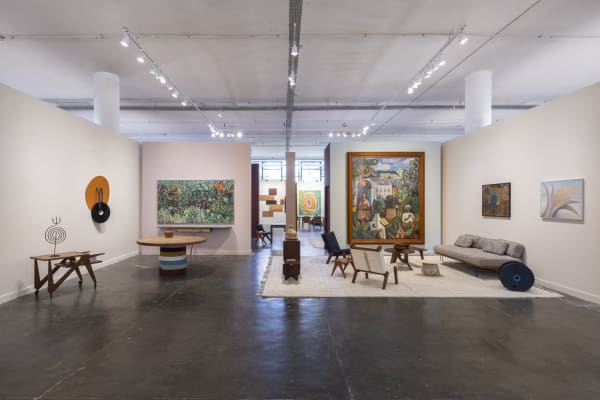
SP-Arte 2025
2 - 6 Apr 2025Galatea is pleased to announce its participation at the SP–Arte 2025 fair, which will take place at the Bienal Pavilion, in Ibirapuera Park, from April...Read more -
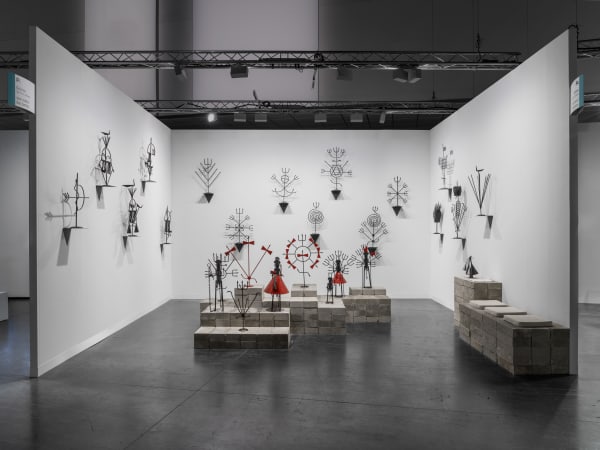
Art Basel Miami 2024 | José Adário
6 - 8 Dec 2024Galatea is pleased to present the project José Adário: On Ogun’s Path at Art Basel Miami Beach 2024, showcasing the iron sculptures—also known as “orisha...Read more -
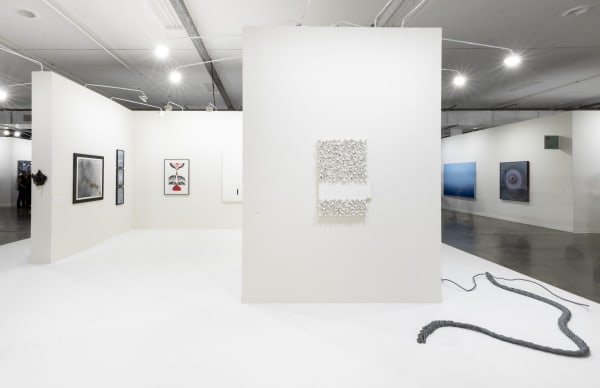
SP-Arte 2023
29 Mar - 2 Apr 2023Galatea’s booth for this edition of SP Arte will present works by artists that reflect our artistic program, featuring works by our represented artists, as...Read more





